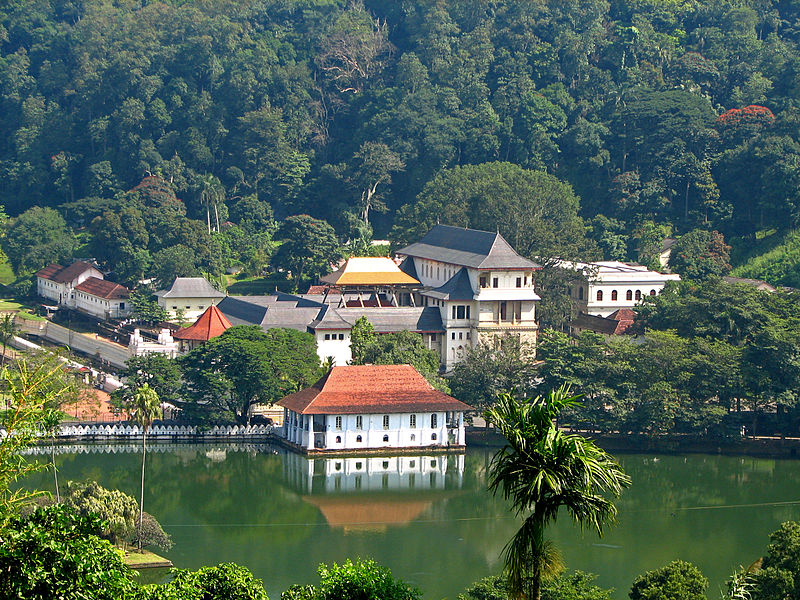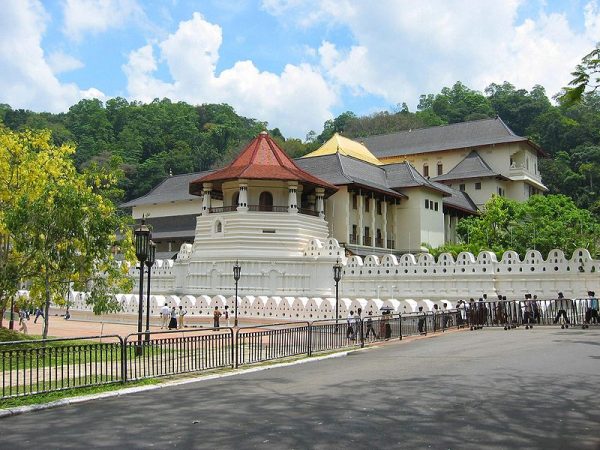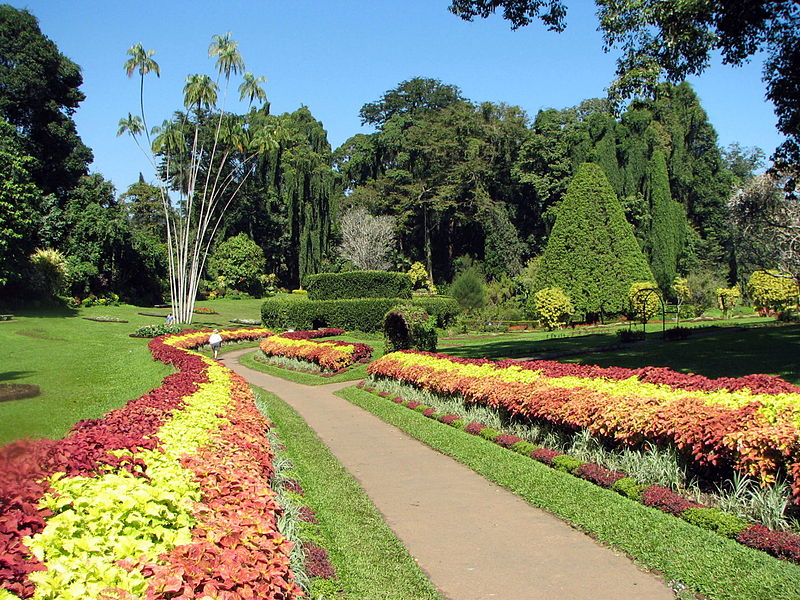
With a rich heritage spanning over 2500 years of history, the Emerald Isle of Sri Lanka not only abounds in natural beauty but also in culture and tradition. Although Sri Lankans in all part of the country share a deep-rooted pride in their traditions, it is the hill capital of Kandy that is considered the beating cultural heart of the nation.
This is due to the fact that Kandy was the last stronghold of the Singhalese Kings to be invaded by the British. Even now, there is an old-world tranquillity to the cobbled streets cradled at the bosom of the lush green hillside, embraced by the mighty River Mahaveli. The beautiful and ornate Temple of the Tooth surrounded by water is the undisputed icon of the city known for its religious fervour.

The Temple of the Tooth, also known as the Dalada Maligawa, is a complex that comprises both the late King’s residential palace and the temple grounds that house the left canine of the Lord Buddha. Ever since the Tooth Relic was bought over from India during the 3rd century, it custodianship has been the signifier of the right to rule over the island’s people. Therefore it was traditionally kept close to the reigning monarch right up until the time of British colonization. The Tooth Relic is one of the most highly venerated objects of Buddhists all around the world and thousands flock to Kandy every day on a holy pilgrimage as well as a tourist rite-of-passage.
The ornate Palace and Temple is surrounded by a moat and watched over by elephantine sentinels that adorn the outer walls. Inside is a showcase of the Kandyan eras finest artwork, with moonstones, colourful frescoes, silver and gilt doors inlaid with gems and other relics of the Singhalese court.
The Tooth itself is only taken out of the premises once a year, during the famous Esala procession. This procession is a result of a mergence between a rite of the harvest festivals and of the Tooth Relic Temple. Today, this procession is an unparalleled spectacle and the grandest institution in the country. Falling somewhere during the full moon of the month of August, the procession travels all over the city streets for seven nights. Gorgeously costumed dancers, whip crackers, fire-eater, stilt-walkers and standard bearers all parade about the city alongside over a hundred caparisoned elephants. The most prominent of these is the majestic tusker who is escorted at the very end of the procession with the golden casket containing the Tooth Relic upon its back.

The Peradeniya Royal Botanical Garden is the third of Kandy’s most feted institutions. Sprawling over 150 hectares of lush green, the gardens are lauded as one of the most beautiful in Asia. Ringed by the mighty Mahaveli and situated at an elevation of 1500 feet, the garden is home to some of the most exotic and rare flora in the region, from avenues of impossibly tall and ancient palms to vibrant hibiscus and endemic medicinal herbs.
The Pinnawela Elephant Orphanage is also a mandatory stopping point for those on a tour of Kandy. While the facility is not in Kandy itself, it is found in the nearby town of Kegalle and is a star attraction along the Colombo to Kandy route. The Elephant Orphanage is the home of injured or ailing elephants or those born into captivity and serves as a rehabilitation centre for the dwindling population of native pachyderms. The baby elephants are a rare treat to watch and most of them are fairly tame after long years of exposure to humans. Watching entire herds bathing in the Maha Oya is one of the unforgettable images that grace many a Sri Lankan postcard.
The temples of Gadaladeniya, Lankatilaka and Embekke are a trifecta of Buddhist shrines which are also found on the immediate outskirts of Kandy. Clustering around the road between Kadugannawa and Peradeniya, the temples are known as the Western Shrines and are all constructs of the 14th century, built during the Yapahuwa and Gampola eras that were the immediately predecessors of the Kandyan Kingdom.
Gadaladeniya is a stone-hewn temple set atop an outcrop of flat rock, ornamented with lacquered doors, frescoes and friezes evidencing the artistic influences and proficiency of the time. Lankatilaka is an unmistakable sky-blue building whose architecture reflects the beginnings of European influence. The Embekke Dewala is not a shrine to Lord Buddha but to the local deity Lord Katharagama. The wooden engravings of the Embekke pillars are amazingly well-preserved examples of traditional woodcraft and artistic traditions that still survive in the present day.
With some of the nation’s most venerated historic and religious monuments all concentrated around this picturesque city, Kandy is a necessary sightseeing tour for those who wish to truly understand the paradise isle. Travellers looking for well-equipped Kandy Hotel Rooms will find no dearth of good accommodation options. Chaaya Citadel Kandy is one of the more popular Kandy hotels and is a revamped ancestral mansion of a former royal minister, ideal for immersing oneself in the historical ambience of the hill country.


